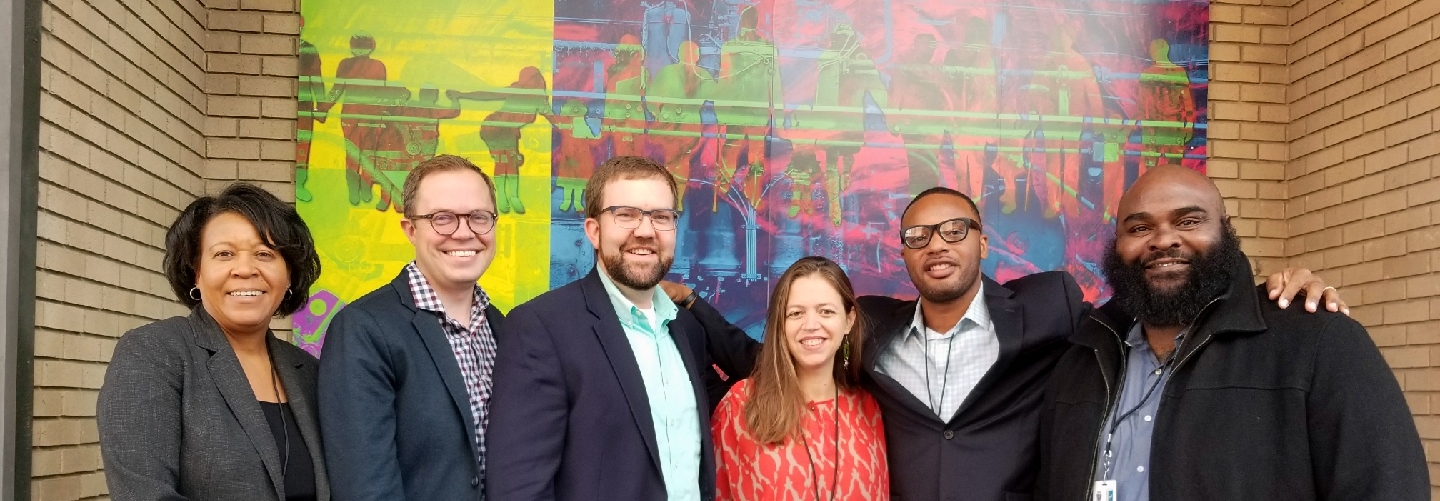
Today’s Morning Buzz is by Josh Edwards, so be kind or not– either way connect with him on LinkedIn and Twitter!!!
What I’m Listening To: Staying Pumped up post #ELGL19 with Queen hits like “Don’t Stop Me Now”
What I’m Reading: HBR’s 10 Must Reads on Innovation
What I’m Watching: NBA & NHL Playoffs
What does my favorite holiday movie have to do with why I think local government should adopt design-based problem solving? If I told you everything, would you believe me? Guess you have to read about my favorite holiday movie which many people would argue is not really a holiday movie after all, Die Hard!
In January 2017, Bloomberg Philanthropies recognized the City of Durham as a new member of its i-teams program, which helps cities solve problems in new ways to deliver better results for residents. The City received a $1.2 million, three-year grant to help support five employees who offer the City a different set of tools and techniques to innovate more effectively, and work with residents and community stakeholders to solve pressing problems.
We have been fortunate to have the opportunity to show that an applied research team that supports design-based problem solving in government is exactly what we need to help solve challenges on the local level. The team collaborates with internal departments & external stakeholders to identify solutions to complex problems.

What does this have to do with Bruce Willis & Die Hard (1988)?
The i-team has developed two successful programs, DEAR and Welcome Home, by focusing on three themes than can be found in the best holiday movie of all time:
- Seek to understand the problem
- Combine qualitative and quantitative data
- Engage throughout the project
During our first project, the i-team used design research to engage with justice-involved individuals to help understand barriers to finding and keeping employment when they return home from jail, prison, or even a day in court. With residents’ help, the i-team developed ideas, and in a few cases prototypes. In each case we started small and applied learnings to the next iteration. Now we have scaled and are delivering pilot phases of programs through new public-private partnerships and City matching funds (Read More Here).

Seek to Understand the Problem:
At the beginning of Die Hard there is a great scene where one of the “evil henchman” is methodically trying to find the right wire to cut, then his impatient friend takes a chainsaw to all the wires.
Slow down, complex challenges require in depth research. The i-team’s success is dependent on the ability to slow down and spend time understanding the root problem, listening to those that know it best. Too often in life, in relationships and work we rush to solutions. We had to focus first on listening to residents who have recently returned home from prison or jail, not solutioning. In addition, we need to understand their experience applying for a job with a criminal record or a criminal charge that was dismissed.
For this very reason, a few weeks into our project we realized we had a problem. None of the i-team had been involved in the criminal justice system. We hadn’t been arrested, spent time in jail, or experienced the stigma that comes from having a record. Thankfully, Bloomberg Philanthropies helped us hire a Community Outreach Coordinator who was justice involved who could speak to what we were learning and apply knowledge from his experience.

Combining Qualitative and Quantitative data:
Sgt. Al Powell took time to get to know John McClane, he asked questions and understood his story, this helped him interpret what was happening. It was additive to the quantitative data that surrounded the officers on the scene.
The i-team wants to be a proof of concept that shows the need to use more qualitative data in local government. Local governments collect reams of quantitative data and there have been many great examples of using data to make decisions that improve services. In addition, all across the country local governments are inviting residents into their sandbox by sharing data and looking for opportunities to work together. However, there is a power of data that can only be harnessed if you connect and hear from people experiencing the challenge. Numbers can’t capture what it’s like to lose your license and to be buried in fines with no hope of finding a job. Listening to people and building empathy will lead to better services.

Engage Throughout the Project:
The FBI showed up late to the scene and took charge. They didn’t know who John McClane was, nor did they try to learn from him. Sgt. Powell had developed a relationship, but was boxed out of the decision making process after he and McClane proved to be a good team. Engagement isn’t a one-time thing that you do and then move on. The i-team worked hard to engage community stakeholders and justice involved residents throughout each stage of the process:
- Problem Framing
- In-Depth Research
- Synthesis
- Idea Generation
- Prototype & Testing
- Delivery & Evaluation
The Durham i-team talked with over 100 stakeholders whose input helped identify 28 insights outlined in the synthesis, where they tried to connect disparate pieces of quantitative and qualitative data to share an understanding of the problem, why it exists, and why it matters (Read it all here).
The i-team relied on input from justice involved residents not only to build the synthesis, but continued to engage through the development and delivery stages of the prototypes. For example, when designing the Welcome Home box prototype, the i-team engaged with Justice Involved Residents who had recently returned home to ask them what they needed the first month home. Thanks to their help, this program helps orient people to the resources available in our community, provides social and emotional support, and illustrates to returning residents that their community wants them to succeed in reentry during their first month home. None of this would be communicated if the most needed items weren’t included.
I challenge you to find a better holiday movie, and better yet a holiday movie that displays the merits of design based problem solving!
